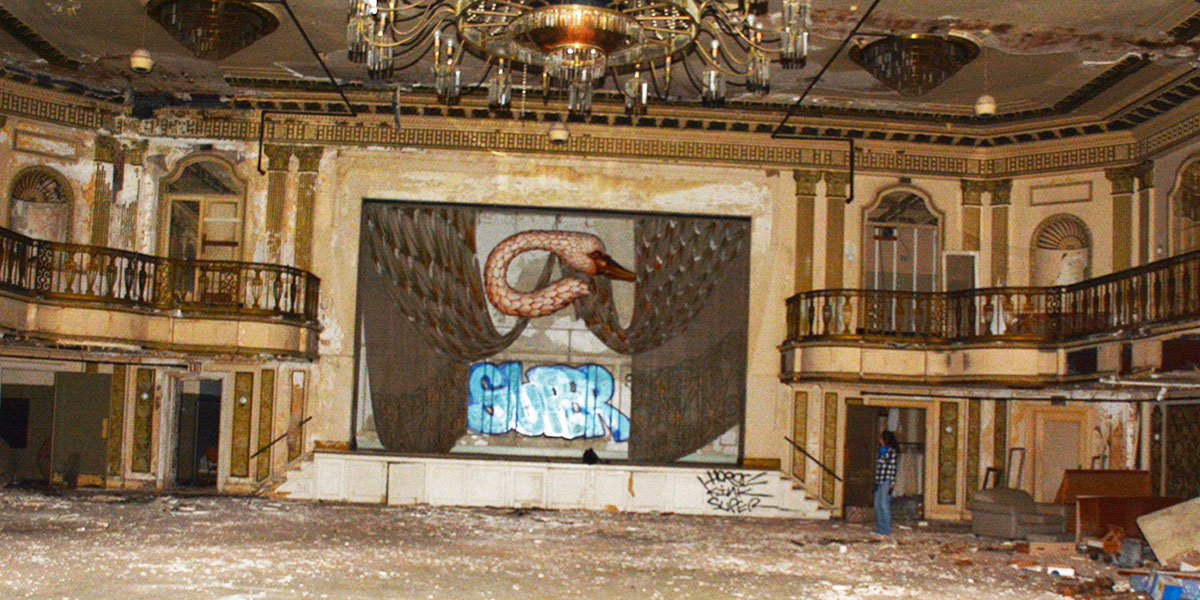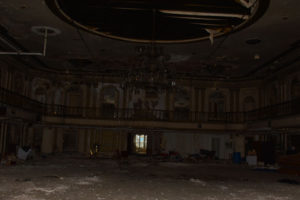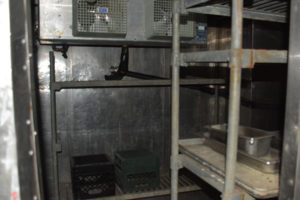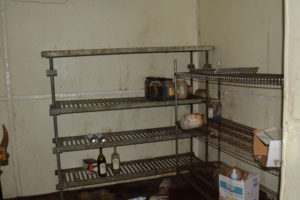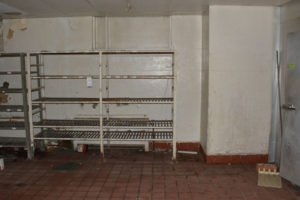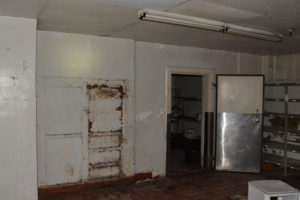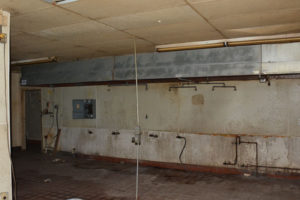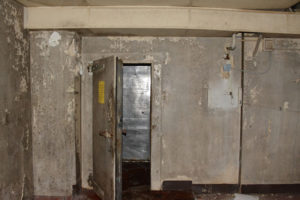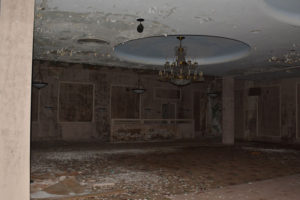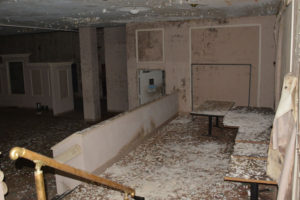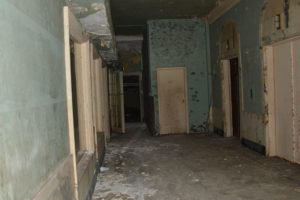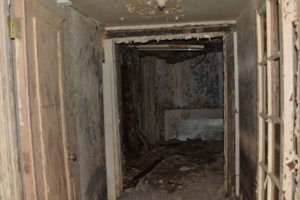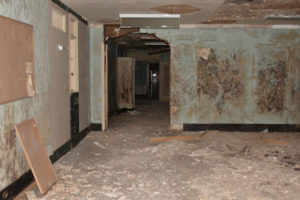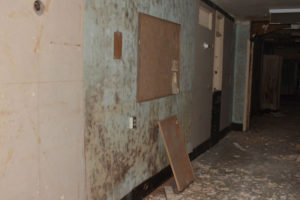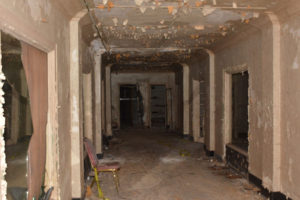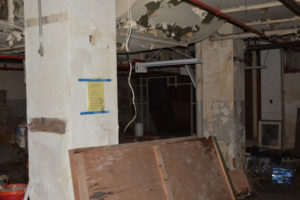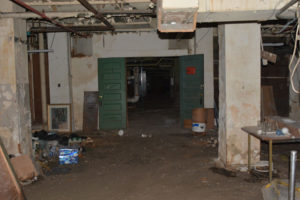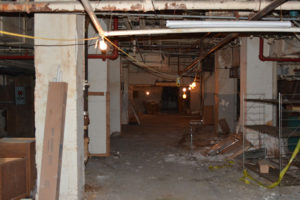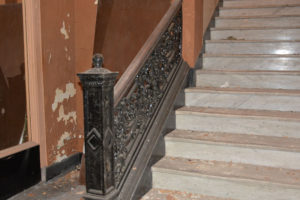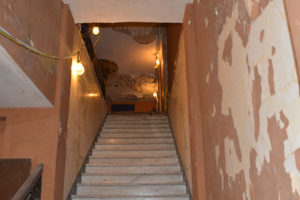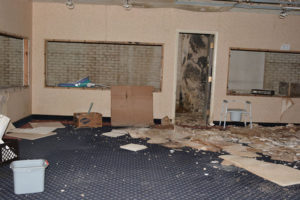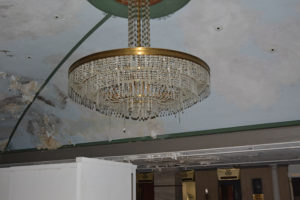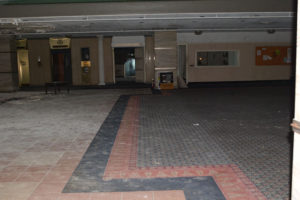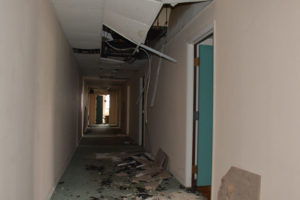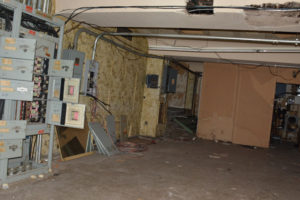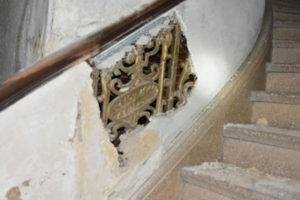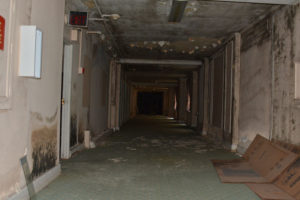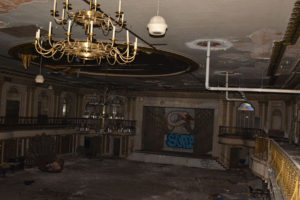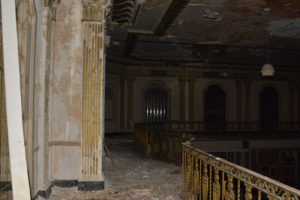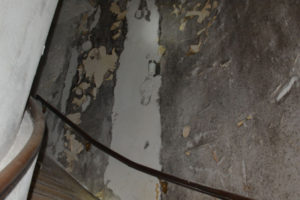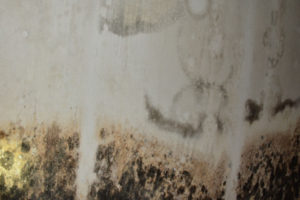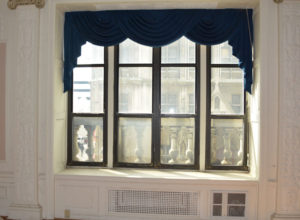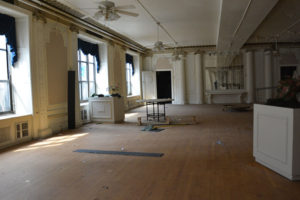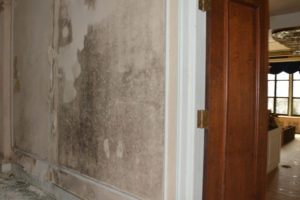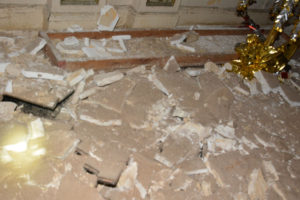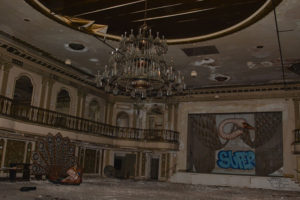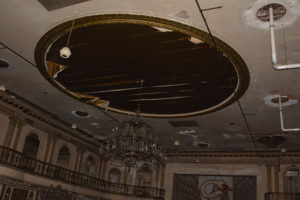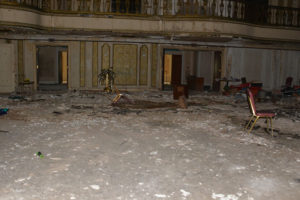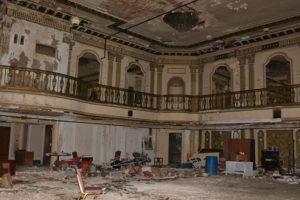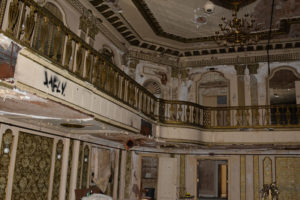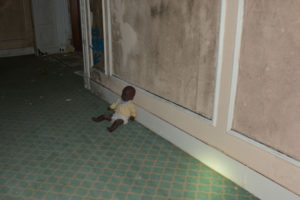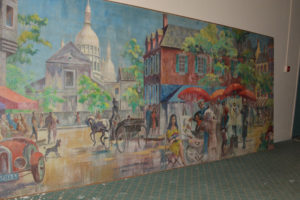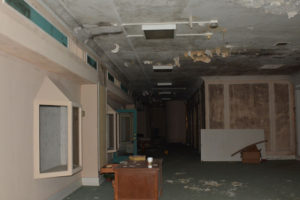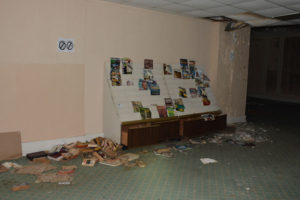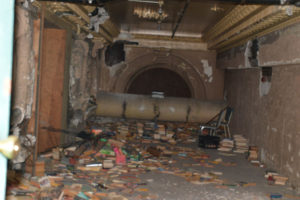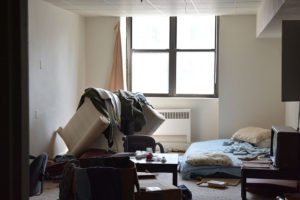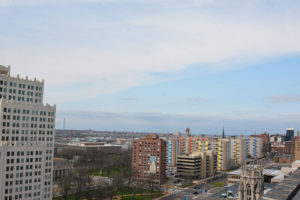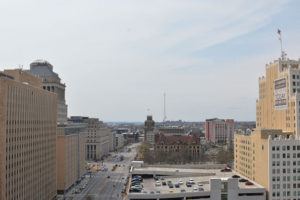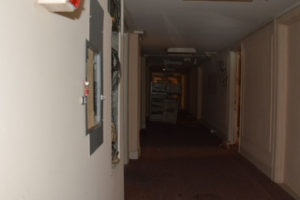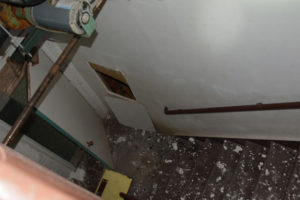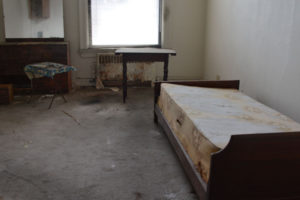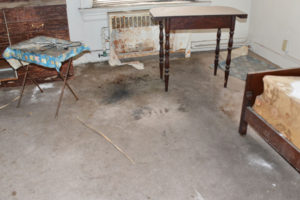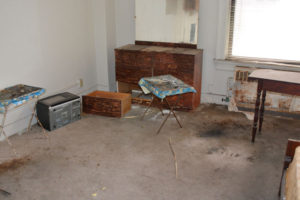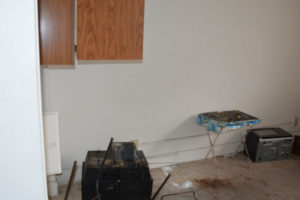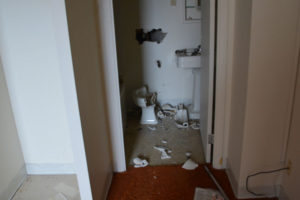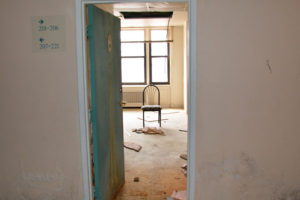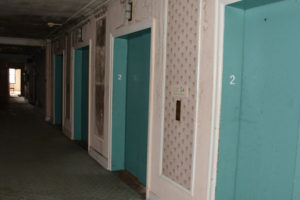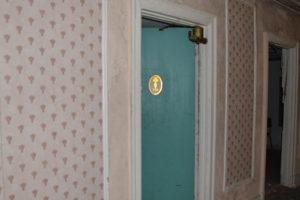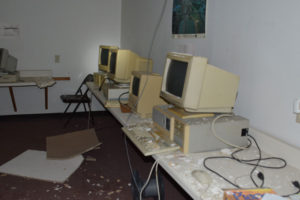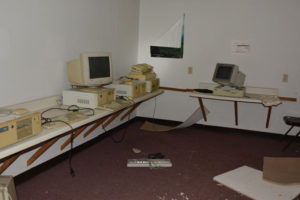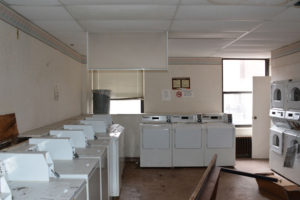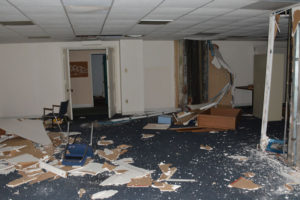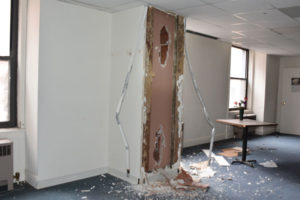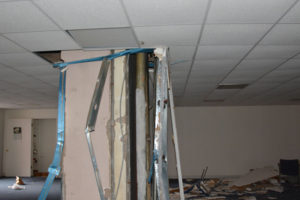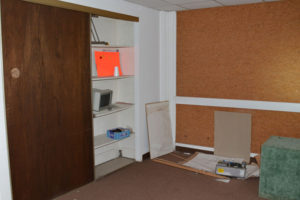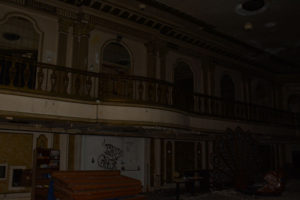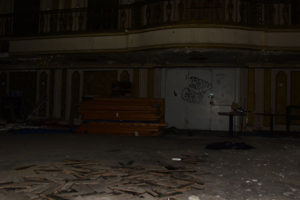With more than a hundred years of history and a list of famous guests ranging from film stars to presidents, it is hard to believe that the Hotel Jefferson could be lost to the halls of history, but with new plans for development, the building may be reborn.
Photos by Joshua Daugette
__________________________________________________
Along the St. Louis skyline lies a grand, historical gem, hidden in plain sight.
The Hotel Jefferson, also known as the Jefferson Arms, has stood prominent as one of the oldest buildings in downtown St. Louis as it was built at the beginning of the 20th century.
Once hosting patrons ranging from international visitors to U.S. presidents, the molding, shambled remains of the building now play house to the city’s homeless bold enough to break in.
A standing testimony to the circle of life and death, it is fitting to start the story of this building when it opened in 1904 to provide the city more visitor accommodations during the 1904 World’s Fair.
The Hotel Jefferson was a rushed project. In fact, according to an article in the Globe Democrat, published on May 22, 1903, obtained by the Missouri History Museum, builders worked round-the-clock to finish the building in time for the event, which developed the 1,240-acre Forest Park and brought 500 concession stands, two museums and 19.7 million visitors to the River City.
“With two shifts of men working on the structure daily, they were confident it would be ready for occupancy by May 1, 1904, opening day of the World’s Fair,” a 1903 Globe-Democrat article said.
The same article also stated how much the city planned on investing for the hotel.
“The name ‘Hotel Jefferson’ was chosen for the $1.2 million luxury hotel. … Director of enterprise said they planned to spend no less than $200,000 in furnishing the hotel,” said the article.
Though $1.2 million doesn’t seem like much to spend on a “luxury hotel,” today, adjusted for inflation, the building would have cost approximately $29 million.
However, even with two shifts of men, the builders had to work quickly to complete the massive building project on schedule. Not to mention developers were competing for manpower with the World’s Fair, which employed 10,000 laborers to get the Forest Park location ready for visitors and exhibitors from 50 nations around the world, according to the Missouri Historical Society.
“Rushed to completion in time to receive the World’s Fair guests, [the hotel] was formally opened to the public,” said a 1904 article in the Globe-Democrat.
Not only was the building “rushed to completion,” but, according to the Missouri Landmark Newsletter published in 1907, it also doubled the estimated construction pricing, costing more than $2.5 million, which would equate to approximately $60 million today.
Despite these factors, the hotel opened smoothly and the 1904 article goes on to describe parties taking place in the halls.
“An estimated 1,500 persons took part in a ‘promenade’ in the hotel corridors and ‘a score of little parties in the cafes and private dining rooms,’” the 1904 article said.
The Hotel Jefferson hosted political gatherings and campaigners in the St. Louis area.
“In June 1916, delegates to the Democratic National Convention, including President Woodrow Wilson, stayed in the Jefferson Hotel,” a University of Missouri St. Louis historical article said.
However, political assemblies and presidential candidates were not the only members on the list of guests cited by UMSL.
“Opera singer Enrico Caruso and movie star Mary Pickford … then Cardinals owner Sam Breadon ate lunch there daily,” said the UMSL historical article.
Ownership of the building merged with two Chicago hotel operators in 1927 and was expanded from the original 350 rooms to 700. This annexation led to the hotel being a common convention site.
“The increased size made the hotel a popular convention center through the years … clinking glasses could be heard across the hotel lobby,” Charles J. Oswald, Globe-Democrat staff writer, wrote in his 1975 article, “Death of a Grand Old Lady.”
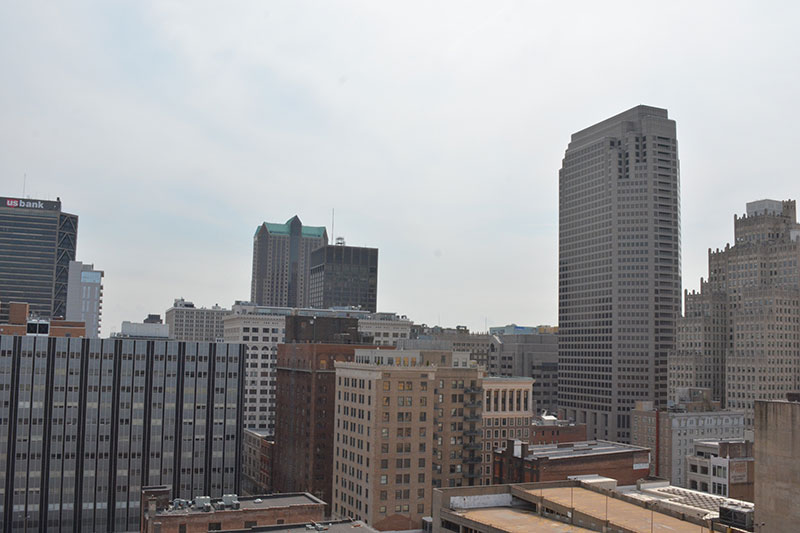
However, no matter how popular the hotel was, it couldn’t escape the financial cripple of the Great Depression.
“The Jefferson Hotel was so popular that management doubled the number of rooms that decade, only to lose money during the depression and go bankrupt in 1944,” said the UMSL historical article.
Oswald cited the history of the building as the second half of the 20th century began.
“In 1950, the Hilton Hotel chain bought the Jefferson for $4 million and pumped another $2.2 million into improvements and renovations,” Oswald wrote.
The Hilton also purchased another prominent hotel in St. Louis around the same time, but the government determined this to be an anti-trust violation and required the chain to sell the Jefferson.
“The hotel was sold to the Sheraton chain in 1955 for $7.5 million, and more improvements were made,” wrote Oswald.
The quick turnover of ownership didn’t stop with Sheraton, as the entire hotel chain, including the Jefferson, was purchased by the International Telephone and Telegraph Corp. in 1968, then sold twice more within seven years.
“The present 800-room hotel was sold in 1973 to White Holding, Ltd., who in turn sold the hotel to St. Louis real estate investor Earl D. Gales in January, 1975,” wrote Oswald.
However, Gales was also unsuccessful running the hotel and disrepair started to show, and customers started to use the newer hotels in the area.
“The hotel had lost much of its glitter and polish. Tourists turned to the newer, more glamorous hotels that have been built in St. Louis recently and were willing to pay the increased costs,” Oswald wrote.
Gales closed the hotel down in August of 1975 until a fate could be determined for the building.
Although Oswald wrote his essay to honor the once-great structure he believed to be at its end, the Jefferson reopened in 1977 as an elderly residence and was renamed Jefferson Arms.
According to the Riverfront Times, the apartments maintained occupancy for almost 30 years while the building slowly fell apart, until Pyramid Cos. purchased the building in 2006 and shut it down for redevelopment.
However, with the housing market crash, monopoly fraud and limited investment capital, the redevelopment never came.
“Pyramid emptied the building, which was 80 percent occupied when it was bought, but completed little work inside before going out of business in the spring of 2008,” Tim Logan wrote in his article, “Jefferson Arms Building Back on the Block,” published on STLtoday in 2010.
A 2015 article published on STLToday discussed investor David Jump’s purchase of the Hotel Jefferson in 2010 on foreclosure and a plan to develop the building into offices for the Teach for America Regional Headquarters as well as affordable living for young teachers.
The plans, however, fell through.
Now, 2016, the building has laid dormant for almost 10 years in disrepair with almost no hope of salvation.
Clear signs of life can be seen in many of the rooms, as if one of the many homeless inhabitants just stepped out; the wind blowing through broken windows on the top floor gives the audible illusion of someone running down the hall.

The once-grand ballroom with sculpted brass railing along a second floor balcony now holds on by the few screws not shattered through rust, serving as nothing more than a decades-old framework for rotting pieces of drywall that had covered this ornate ironwork.
Plaster caves in and falls off the ceiling from a time long passed, the crystal chandelier still hangs from the ceiling, clinging to the forgotten elegance of the room.
Murals, instead of portraying beautiful artwork in the hallways, now exhibit bright blue graffiti creating letters to spell out obscenities, all seeming to be more befitting of the hotel’s new guests.
Leftovers and wine still set in the dead freezers and full computers abandoned in the control room suggest everyone had just left one night after closing expecting to come back the next morning, routine as usual, but never returned through the doors.
Peeking into a dark hole in a door where a doorknob clearly should be yields brief glimpses of movement, with a visitor’s hope that the movement being watched is not a person arising from sleep.
It is presently dark, desolate and rank.
Resurrection may still come as STLToday reported Mike Sarimsakci, investor and president of Alterra International, has inquired about the property and toured the inside.
The prospect of this redevelopment looks promising for the historic hotel as Sarimsakci seems to be gathering potential stakeholders.
“Sarimsakci hosted a cocktail gathering at Cielo, at the Four Seasons Hotel, for contractors and designers interested in his St. Louis project,” Tim Bryant wrote for the STLtoday article.
St. Louis can only wait and see what might become of this once-majestic behemoth.
For more information about the current complexities and issues revolving the building today, reference STLToday articles from 2012, 2013, 2014 and 2016.
